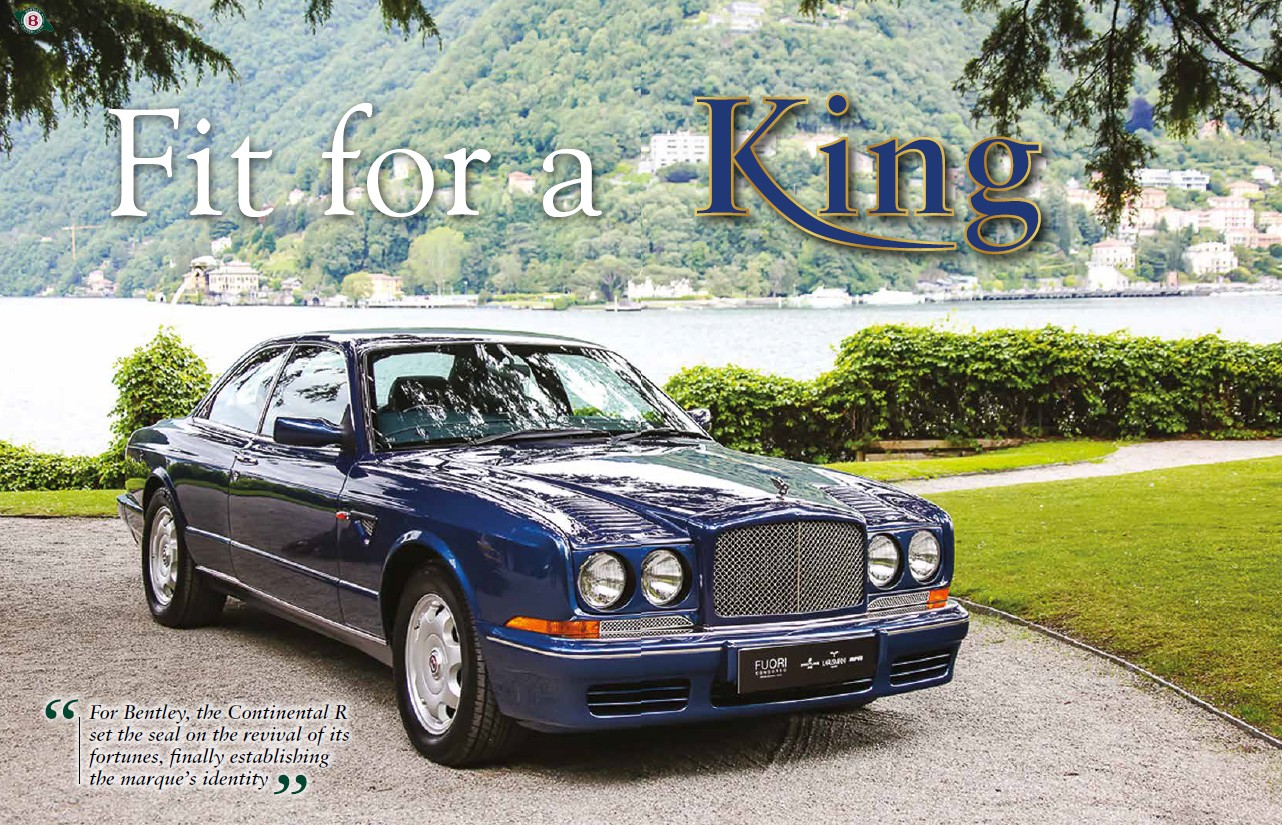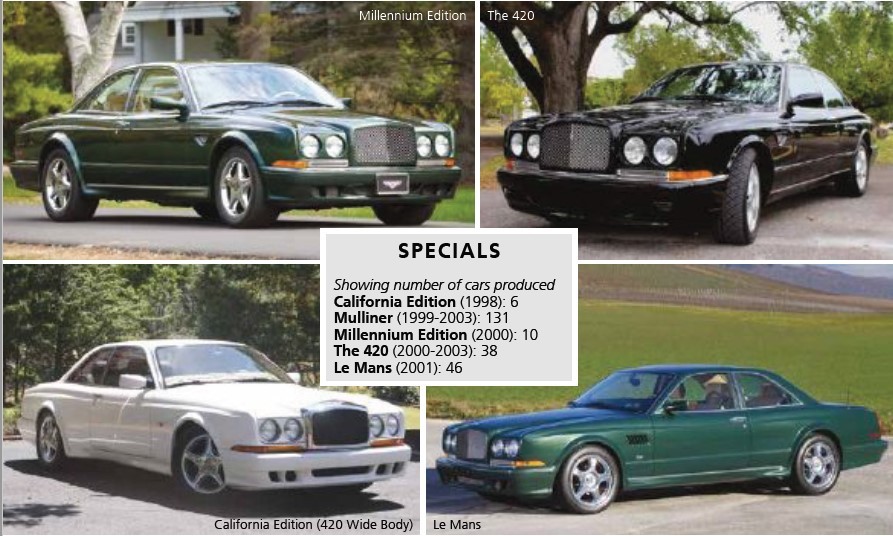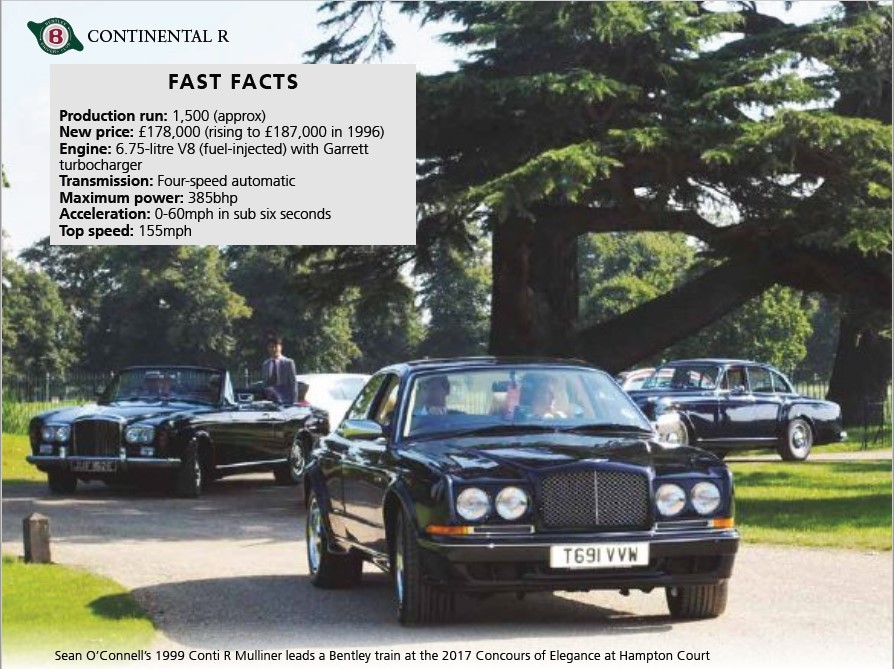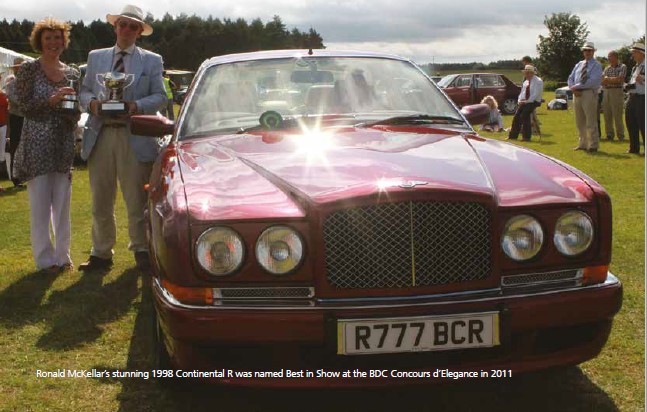
The Continental R was trumpeted by a regal fanfare when it broke cover 30 years ago, with a princely price tag to match. Stuart Newman celebrates a modern classic which helped reignite the Bentley brand. Images: Courtesy of Review archives, Roger Mathew, Colin Newman and Internet
When you make your global bow to all the drama and theatre of a majestic regal anthem you had better be special. Especially if that timeless piece of classical music has traditionally heralded the coronation of every British monarch since 1727. And especially if you’re simply a mere car… That was the stage, at the worldleading Geneva Motor Show in 1991, on which the latest Bentley model was unveiled. And perhaps the choice of Handel’s Zadok the Priest was more than apt: the Continental R boasted a king’s ransom price tag – it was the world’s most expensive production car at £178,000. Indeed, Bentley’s new boy so impressed a watching Sultan of Brunei that he quickly snapped up the actual show car, resplendent in vermilion red, for a reported price of just over £2 million. It was not only the Sultan who was enraptured by the two-door coupé, the most powerful and fastest Bentley of its era. It upstaged the Geneva launch of Mercedes’ W140 and enjoyed an encouragingly positive public reception.

For Bentley, it set the seal on the revival of its fortunes, finally establishing the marque’s identity as being entirely separate from that of parent company Rolls-Royce Motors. Indeed, it was the first Bentley for 26 years, since the 1965 S3 Continental, to feature a body not shared with a Rolls-Royce model. The genesis of the Continental R could be traced back to the mid- 1980s when, in an effort to reignite Bentley’s sporting heritage, Rolls- Royce Motors opted to add a new, distinctive-looking coupé to its Bentley range. Dubbed ‘Project 90’, a fibre-glass mock-up featured, to enthusiastic response, at the 1985 Geneva Motor Show; however, the Project 90 concept was ultimately mothballed when Rolls-Royce instead decided to look towards a successor to its existing Corniche.
The designs for the new Corniche produced were, Rolls- Royce ultimately decided in 1986, better utilised in the creation of a new Bentley coupé. These drawings, which sported a subtle-looking rear spoiler, eventually came to fruition five years later as the Continental R, with the coachwork by HJ Mulliner- Park Ward. And while the new car’s thinrimmed (albeit now leather bound) steering wheel and understated switchgear harked back (some might say) to post-war Bentleys, among the notable features of the new model was hydraulic, self-levelling suspension. Looking at the Conti R’s basic credentials it’s hard not to understand why it was – and still is – so sought after. Sveltely designed with excellent handling and enormously rapid, in its mid- 1990s heyday the standard version was capable of a reported 155mph, and producing up to 385bhp, from Bentley’s tried and tested 6.75-litre V8 fuel-injected engine; the Garrett turbocharger and fourspeed automatic gearbox (it was the first Bentley to use the GM4L80-E transmission) also helped propel the machine from 0-60mph in “sub six” seconds. Incidentally, the name of the model has a two-pronged tale to tell: ‘Continental’ offers a respectful nod to the post-war Continentals while ‘R’ highlights the car’s keenly developed high-speed roadholding capabilities. The resurrection of Bentley’s name during the 1980s and into the early 1990s had started with the Mulsanne, followed by the Mulsanne Turbo and Turbo R. The Continental R added significant further stature to that already heavyweight line-up. The Conti R, along with its three predecessors, was produced during the period when Bentley was under the auspices of Vickers plc, following its merger with Rolls-Royce. BDC Member Richard Charlesworth, a former senior executive at Crewe during that period, is clear about the role the new arrival played in Bentley’s revival: “These were (four) hugely important models in the renaissance of Bentley. Vickers had also spent a lot of money upgrading the manufacturing facilities at Crewe.” The continued momentum afforded to the Bentley brand with the introduction of the Continental R continued with the subsequent arrival in the 1990s.


of the Continentals S and T, Brooklands, Azure (essentially a Conti R convertible), Turbo R and Arnage before hitting something of a crescendo with the launch of the Continental GT in 2003. These models, of which the Conti R was a leading player, helped cement Bentley’s market-leading reputation in the luxury-car arena. Rolls-Royce/Vickers, and new
Bentley owner the Volkswagen Group (from 1998), kept faith with the Continental R’s popularity throughout the 1990s and into the new millennium, turning out some 1,500 versions of the two-door classic, including a reported 1,236 standard and 231 variants (see panel), until production ceased in 2003. While several variants and specials of the Continental R were produced for general sale, bespoke versions were also produced on request for wealthy customers – such as the aforementioned Sultan of Brunei. Curiously monikered the ‘Blackpool cars’, these individually tailored machines were crafted from unique bodyshells, often costing millions of pounds to create, from which a handful of examples were then made.
The end of the Conti R story some 18 years ago signalled, in one way, the end of an era. It was the final Bentley to be based on the Rolls-Royce Silver Spirit platform, and to possess floormounted brake and accelerator pedals, sill-level floors, and mineral oil suspension and braking systems. In terms of its legacy, the Conti R is now viewed as a true modern classic, and one which has certainly proven popular with BDC Members. A quick
look at the membership database shows some 300 Continental Rs currently listed. This makes the Continental R one of the most widely owned modernday Bentleys registered on the database. Priced at £175,000-plus when new in 1991, escalating to £187,000 for an uprated 1996 model year version, good-quality used Conti Rs can now be snapped up for anything between £30,000 and £50,000 – proof, if needed, of the car’s enduring status and longevity.
Thank you to the Bentley Drivers Club (BDC) for giving us kind permission to use this article on our website.
Become a member of the Bentley Driver Club today, visit www.bdcl.org/membership


19 Oct 2022
19 Oct 2022